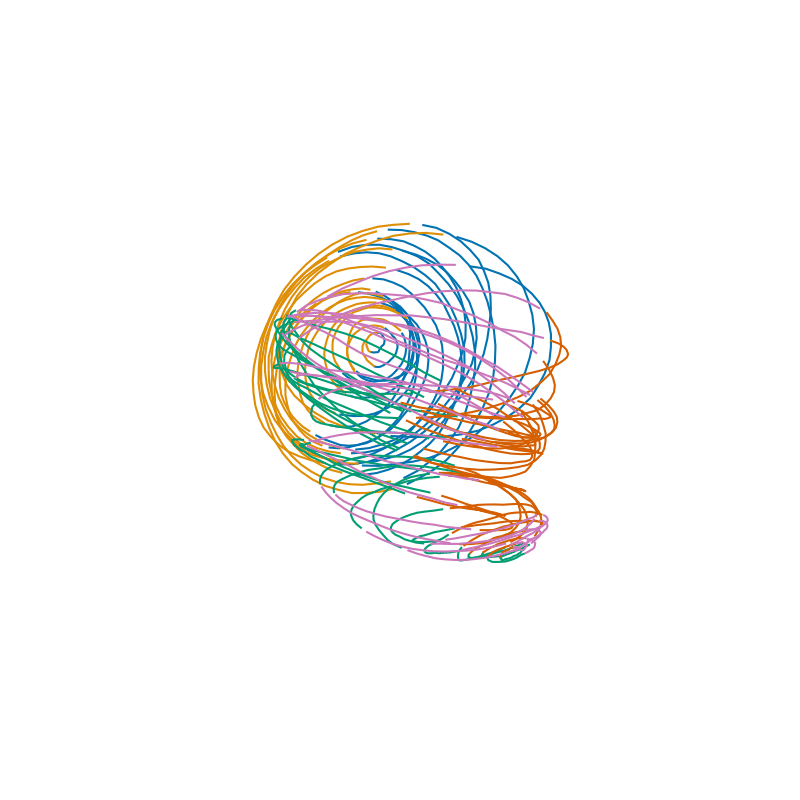MESA is a fully distributed, asynchronous, and general purpose optimization algorithm for Consensus Simultaneous Localization and Mapping (CSLAM). Multi-robot teams require that agents have timely and accurate solutions to their state as well as the states of the other robots in the team. To optimize this solution we develop a CSLAM back-end based on Consensus ADMM called MESA (Manifold, Edge-based, Separable ADMM). MESA is fully distributed to tolerate failures of individual robots, asynchronous to tolerate communication delays and outages, and general purpose to handle any CSLAM problem formulation. We demonstrate that MESA exhibits superior convergence rates and accuracy compare to existing state-of-the art CSLAM back-end optimizers.
This code implements the MESA algorithm as described in our ICRA 2024 paper which can be found on arXiv and IEEE Xplore. If you use this package please cite our paper as:
@inproceedings{mcgann_mesa_2024,
title = {Asynchronous Distributed Smoothing and Mapping via On-Manifold Consensus {ADMM}},
author = {D. McGann and K. Lassak and M. Kaess},
fullauthor = {Daniel McGann and Kyle Lassak and Michael Kaess},
booktitle = {Proc. IEEE Intl. Conf. on Robotics and Automation (ICRA)},
year = 2024,
pages = {4577-4583},
address = {Yokohama, {JP}}
}
The package is broken down into 4 main components:
mesa/- Contains the source code for the MESA algorithmexperiments/- Contains the code to run the experiments in our paper.thirdparty/- Contains implementations of prior works included via submodules.scripts/- Helper scripts to analyze experiments and visualize results. [requires python + bindings]
Each component contains its own readme with additional information.
These install instructions were tested on Ubuntu 20.04 as of April, 2024.
- In a good location on your machine construct a workspace (e.g.
mesa_workspace) to house the various dependencies for this package.cd /some/path/andmkdir mesa_workspace
- We will assume that
mesa_workspaceis the name of your working directory for the rest of these instructions - [Optional for scripts] Next construct a python environment for this workspace. We recommend using conda.
- Activate the environment
- Install
numpy matplotlib scipy setuptools - Note: This is needed only to run the python scripts in
scripts/
- In the workspace directory clone gtsam from fork:
git clone -b mesa_workspace git@github.com:DanMcGann/gtsam.git- NOTE: You must be on branch
mesa_workspace
- Enter
gtsam/cd gtsam
- Build GTSAM
mkdir buildcd buildcmake .. -DGTSAM_BUILD_PYTHON=1make
- [Optional for scripts] Install GTSAM python into the project's python environment
make python-install
- Install JRL dependency
nlohmann-jsonsudo apt-get install nlohmann-json3-dev
- In the workspace directory clone JRL
git clone --recurse-submodules git@github.com:DanMcGann/jrl.git
- Enter JRL and build
cd jrlmkdir buildcd buildcmake .. -DGTSAM_DIR=/path/to/mesa_workspace/gtsam/build -DGTSAM_INCLUDE_DIR=/path/to/mesa_workspace/gtsam/gtsammake
- [Optional for scripts] Install JRL python into the project's python environment
make python-install
- In the workspace directory clone MESA
git clone --recurse-submodules git@github.com:rpl-cmu/mesa.git
- Enter MESA and build
cd mesamkdir build && cd buildcmake .. -Djrl_DIR=/path/to/jrl/build -Djrl_INCLUDE_DIR=/path/to/jrl/include -DGTSAM_DIR=/path/to/gtsam/build -DGTSAM_INCLUDE_DIR=/path/to/gtsam/gtsam
In this project we use JRL (Json Robot Log) format datasets due to their improvements over alternatives like g2o or toro. For more info on JRL see here. Inline with the JRL format definition we assume that variable keys use characters to identify robots and that all variables "owned" by a robot are indexed as such. Since robots share variables in the multi-robot case a robot's local factor graph will include variables "owned" by other robots and those variables will be indexed using the owner's character.
Note: Since MESA and the prior works implemented in this project are batch methods we do not use the incremental nature of the JRL format. Rather our runner interface aggregates all measurements in a JRL file so the methods can optimize the problem in batch.
Below are example instructions to use this package to generate a dataset and run different optimization methods.
First we need to generate an example dataset. From the mesa_workspace directory you can run the following command. Note this command is the same (apart from paths + number repetitions + name) as the command used to generate the 200 length datasets in the length experiment from our ICRA paper.
./mesa/scripts/make-multi-robot-3d-dataset -o . -nr 4 -np 200 --loop_closure_index_threshold 10 --loop_closure_distance_threshold 5 --loop_closure_probability 0.4 --comm_range 30 --comm_freq 10 --odom_noise_sigmas 0.175 0.175 0.175 0.05 0.05 0.05 --loop_noise_sigmas 0.175 0.175 0.175 0.05 0.05 0.05 --comm_loop_noise_sigmas 0.175 0.175 0.175 0.05 0.05 0.05 --prior_noise_sigmas 0.0175 0.0175 0.0175 0.01 0.01 0.01 --robot_zero_prior_noise_sigmas 0.0175 0.0175 0.0175 0.01 0.01 0.01 --xlims -30 30 --ylims -30 30 --zlims -10 10 -n example_dataset -r 1
./mesa/build/experiments/run-dist-batch -i example_dataset_0000.jrl -m centralized -o . --is3d./mesa/build/experiments/run-dist-batch -i example_dataset_0000.jrl -m geodesic-mesa -o . --is3d
./scripts/plot-results -d example_dataset_0000.jrl -r example_dataset_0000_geodesic-mesa_<DATE>/final_results.jrr.cbor --is3d
./scripts/compare-convergence -d example_dataset_0000.jrl -c example_dataset_0000_centralized_<DATE>/ -m example_dataset_0000_geodesic-mesa_<DATE>/ -rs 1 -ts 1
If you have any issues with the code please submit a bug report here on github!


